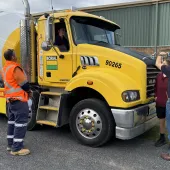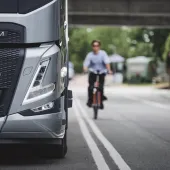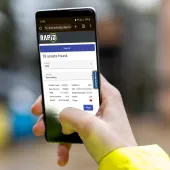Improving Site Safety with Intelligent Transport Systems
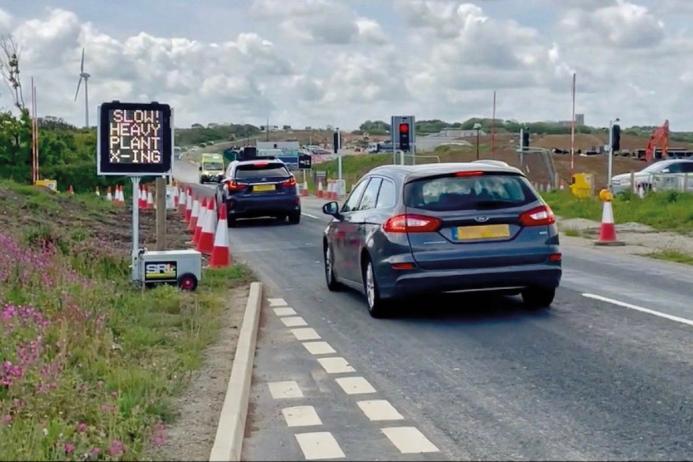
First published in the November 2024 issue of Quarry Management
By Ben Parsons, business development director, SRL Traffic Systems
According to the Health and Safety Executive’s February 2023 Vehicles and Edge Protection guidance, transport accounts for 40% of accidents and 60% of deaths in quarries. Quarry transport safety has long been an HSE priority, and the organization is a member of the Quarries National Joint Advisory Committee (QNJAC) tripartite committee. While QNJAC’s Target Zero safety enhancement initiative to establish quarrying as a zero-harm industry has contributed to a dramatic reduction in the overall number of quarry accidents since 2000, the HSE’s report notes that transport safety, in particular, has still to be effectively addressed by the industry.
The responsibility to improve transport safety ultimately lies with trade associations and individual quarry managers, and their motivations to act are threefold. It goes without saying that absolutely first and foremost is the compulsion to honour their duty of care and protect their workforce and visitors from harm. Second is the recognition that in this tightly regulated sector, every accident undergoes rigorous investigation, invariably requiring the costly suspension of operations that can last until the inquiry is concluded. And third is the acknowledgement of the rightly steep fines levied should regulations prove to have been violated.
The intelligent transport system (ITS) industry is increasingly deploying its expertise gained in the highways sector to work in partnership with quarry managers to improve vehicular safety, providing portable and temporary solutions that help to protect their workforces and visitors both on site and at public highway exit and crossing points, along with passing road users. Crucially, these innovative, integrated mobile hire solutions also enable on- and off-site traffic to flow smoothly, facilitating the efficient operation of quarries.
Promoting on-site safety
When integrated with automatic number plate recognition (ANPR) technology, variable message signs (VMS) and automatic safety barriers limit quarry access, along with that to particularly dangerous areas such as excavations and tips, to authorized vehicles only. These solutions also allow managers to keep quarry HGVs, non-site vehicles, and pedestrians separate.
The integrated solutions help to minimize the quantity of vehicles on typically narrow, single-lane haul routes, reducing the risk of collision and the need for reversals, precluding congestion. While VMS directs visiting vehicles to dedicated car parks, when used in conjunction with safety barriers, they also help to contain incoming HGVs in holding areas until they are required at loading points.
Where visiting and site vehicles need to cross, where one-way traffic only is possible, and where pedestrians need to traverse haul routes, compact, temporary or portable traffic signals are used to safely manage vehicles.
VMS are key in the communication of safety information. They alert HGV drivers to maximum vehicle height restrictions on routes with edge protection. They also affirm speed restrictions and direct pedestrians to safe crossing points.
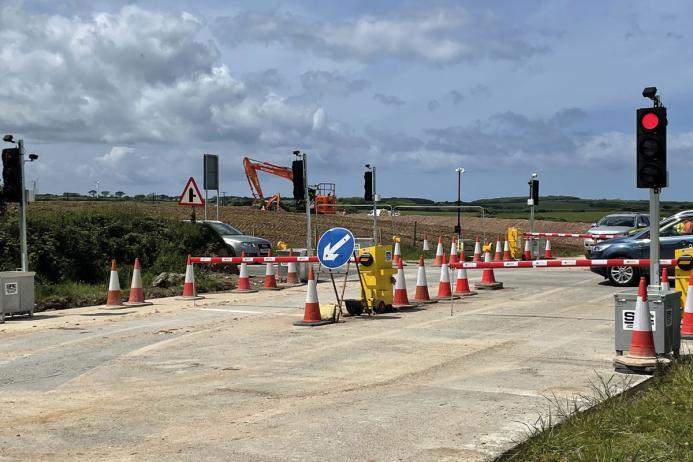
Protecting drivers at public haul route junctions
Intelligent transport systems can also be used to promote safe and efficient quarry plant crossing at public highways, allowing sufficient time for slow-moving HGVs and preventing on- and off-site back-ups. Haul route crossing solutions incorporating integrated adaptive detection technology feature traffic signals that respond to the actual flow of quarry vehicles rather than simply operating to timings set to accommodate the slowest plant. ‘All-red’ facilities ensure that entry barriers remain open until HGVs are safely across the junction.

Ensuring perimeter protection
Whilst integrated ITS solutions work to ensure that traffic flows safely and efficiently around quarries, portable, panoramic CCTV featuring motion detection analytics and sirens keeps a close eye on the site, alerting security teams when perimeters are breached. Not only do these cameras protect quarry assets and workers and guard against vandalism, the technology also plays a vital role in the protection of the local community, preventing unauthorized access to these dangerous sites.
ITS selection
There are a number of things that quarry managers should bear in mind when specifying mobile ITS to help improve vehicular safety at their premises. It is not simply a question of looking for robust products that offer reliable performance in all weather conditions, although these are undoubtedly key selection criteria.
For the protection of workforce and visitors, it is vital that the VMS signs and traffic signals selected appear similar to those used on public highways in order to promote ease of interpretation by drivers and pedestrians.
For the safety of those with responsibility for ITS control and maintenance, quarry managers should seek out equipment that can be remotely operated and serviced, minimizing the time that operatives need to spend in near proximity to dangerous areas; solutions incorporating telematics enable staff to check battery levels and system functionality from a position of safety.
From an operational perspective, in addition to extending battery cycles and reducing the frequency of exchanges required, solar/hybrid equipment facilitates operation in the absence of mains provision. It also helps quarry managers to keep their sites safe while meeting environmental targets.
The future
While Target Zero has contributed to a reduction of more than 80%* in quarry accidents since 2000, helping to establish the industry as one of the country’s leaders for setting and delivering harm-reduction targets, there is still a long way to go. ITS solutions can help quarry managers to play their part, improving vehicular safety at their sites and contributing to the ongoing drive to establish the sector as a ‘zero-harm’ industry. One accident is one too many.
*QNJAC: Workforce Involvement in the Quarrying Industry document
Subscribe to Quarry Management, the monthly journal for the mineral products industry, to read articles before they appear on Agg-Net.com



